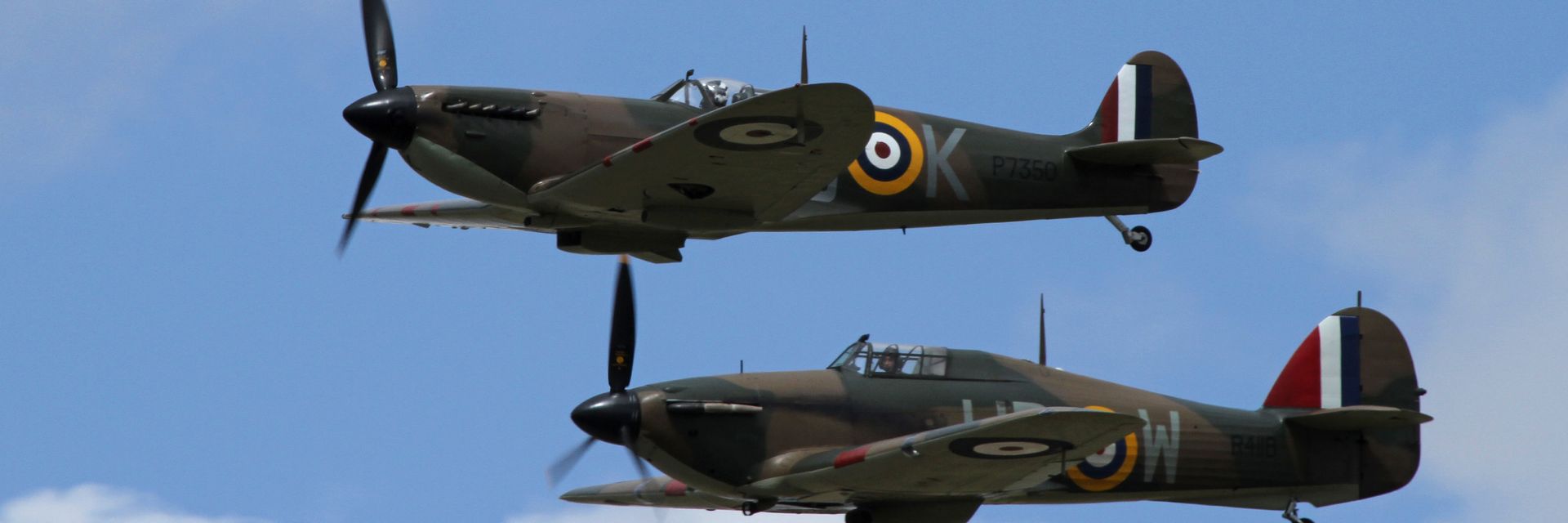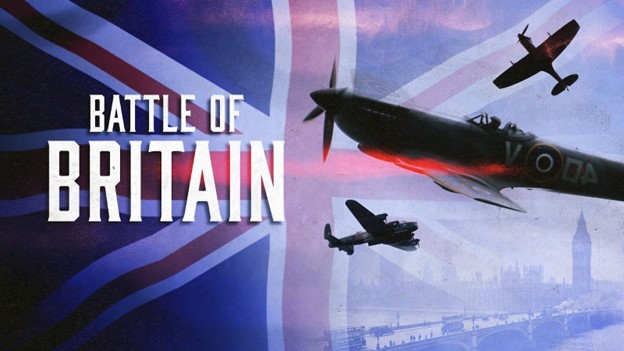Going into the Battle of Britain, the German Luftwaffe had momentum and numerical superiority. But Britain had two legendary fighter planes that made the difference.
◊
In July 1940, Britain’s back was against the wall. Germany’s blitzkrieg had powered through the Low Countries into France in the spring. Resistance collapsed, and the British Army had escaped the continental mainland from the French port of Dunkirk by the first week of June. France itself had surrendered to the Germans on June 22.
Adolph Hitler, the Nazi leader, expected Britain to surrender, too, but the island nation did not cooperate with his plans. So, on July 10, Hitler launched the bombers of his vaunted air force, the Luftwaffe, to prepare the way for an eventual invasion. They attacked in wave upon wave, expanding their targets to include every British city within range. The Battle of Britain, the first great clash of arms to be fought almost entirely in the air, had begun.
Get the full story of this historic aerial conflict in MagellanTV's Battle of Britain.
Defenders Rise to Confront the Enemy
On paper, the Luftwaffe appeared to enjoy an enormous advantage in the number of aircraft available for the aerial blitzkrieg – over 2,500 planes of all types against only about 750 Royal Air Force fighters. What the Germans didn’t have, though, were Supermarine Spitfires and Hawker Hurricanes.
As city dwellers below hunkered down in bomb shelters (and often evacuated their children to safe havens away from the cities), Spitfires and Hurricanes rose to meet the onslaught of Heinkel and Junkers bombers, escorted by Messerschmidt’s famed, albeit short-ranged, Bf 109 fighters. While the Spitfire is often celebrated as the iconic symbol of the battle, both aircraft were essential to the ultimate success of the RAF.
The Complementary Performance of Spitfires and Hurricanes
The Spitfire was a technologically advanced fighter with excellent speed, maneuverability, and climb rate. It had a higher top speed than the Hurricane and was more agile. The Spit was particularly effective in engaging German fighters, due to its superior performance at higher altitudes. And, though aesthetics don’t generally count for much when evaluating the performance of warplanes, the Spitfire is often featured on lists of the most beautiful aircraft ever built.

Supermarine Spitfire (bottom) and Hawker Hurricane (Credit: Sgt. Jack Pritchard, RA/MOD, via Wikimedia Commons)
On the other hand, the ugly-duckling Hurricane had been manufactured in greater numbers before the battle commenced. It formed the backbone of the RAF’s Fighter Command at the time. While the fighter was slightly slower than the Spitfire, the Hurricane was robust, stable, and had impressive firepower. It played a critical role in ridding the skies of the German bombers that rained destruction upon British targets.
The Hurricane also accounted for a higher number of enemy aircraft shot down during the Battle of Britain, around 60 to 65 percent, while the Spitfire accounted for approximately 35 to 40 percent. However, Spitfire squadrons achieved a higher victory-to-loss ratio against the Luftwaffe, and their performance against the Bf 109 fighters was crucial to freeing up the Hurricanes to go after the bombers.
In addition to these remarkable fighter planes, there were a number of additional factors that contributed to England’s victory in the Battle of Britain. (For example, the use of radar to guide defenders to their targets was of critical importance.) But when Churchill said, “Never in the field of human conflict was so much owed by so many to so few,” the Spitfires and Hurricanes, and their valiant pilots, were the “few.”
Ω
Title Image: Spitfire (top) and Hurricane (Credit: Ronnie Macdonald, via Wikimedia Commons; image cropped to fit)


